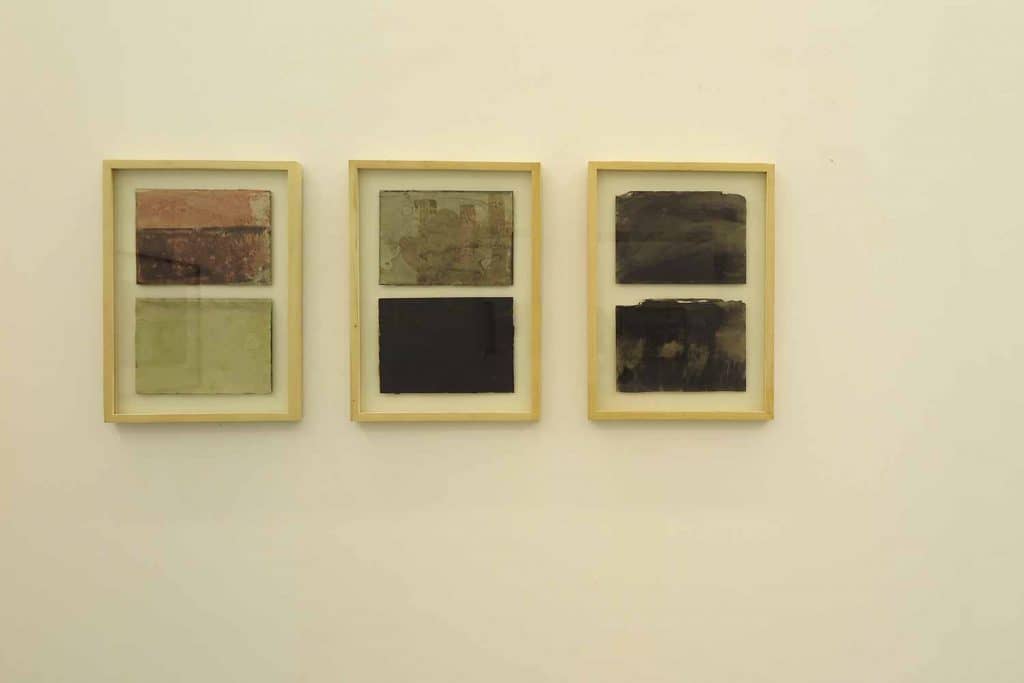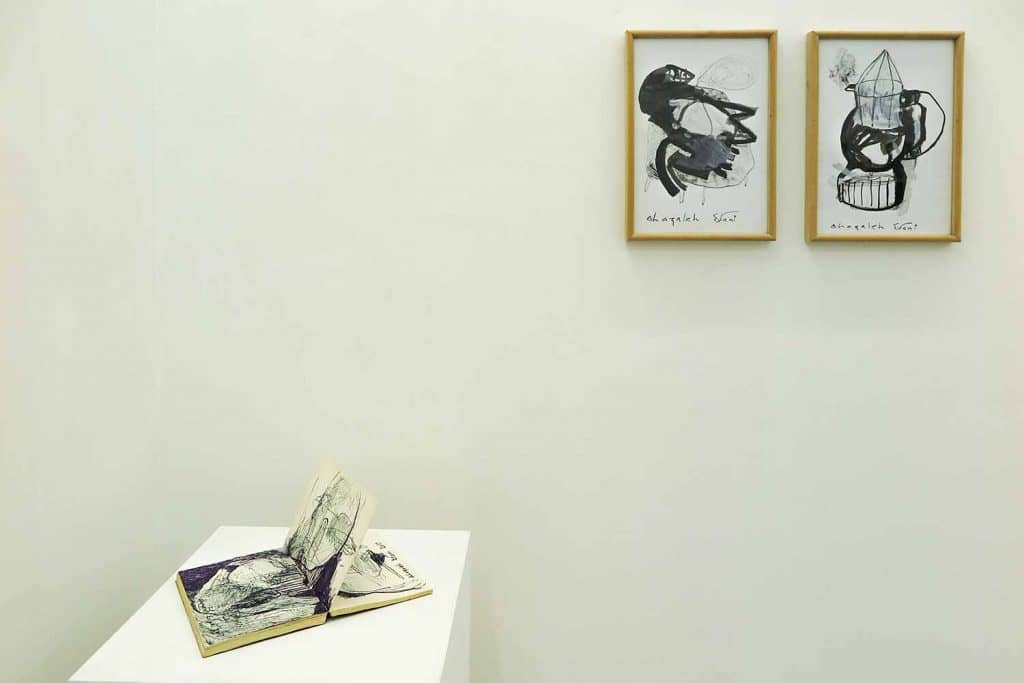Back Hand

Back Hand
Group Exhibition
May 21 – June 11, 2021
Curator: Shirin Gharavisky
In table tennis, backhand is presumably an easier shot which needs neither waist swing, nor considerable struggle. Yet, a precise backhand is thought to be hard to restrain. Sketching, in the world of visual arts, is considered the very backhand shot. Particularly in its contemporary sense, sketching is simple and complicated at the same time, devoid of any sort of intermediate, candid but deep and influencing. Painting bullying as it can be called, sketching is in fact keeping distance from this term, attributing frankness and honesty instead the bare-bone idea of Backhand exhibition came from a sketching notebook, but did not constrain itself to one particular form of sketch presentation. Backhand is a reflection of sketches coated by sketch book, research, and personal spirit. A mirror reflecting the most innate states of contemporary sketching. Backhand resorts to the encounter of the artist with his/her self; shots hit, not expecting any response from the other side. Their gist is believed to be the common point of these works.
Here in Soo Contemporary, through concentrating on and diving in more diverse contemporary sketching approaches, we strive to reach a wholesome image and perspective about subjects going on in artist’s minds and workshops. That is how we can get a better grasp of Iran’s contemporary arts through an analytical behavior, and then publicly exhibit them.
Soo Contemporary/May 2021 Artists:
Koorosh Shishehgaran, Ali Golestaneh, Fereydoun Ave, Omid Bonakdar, Sale Sharifi, Shantia Zakeramoli, Bahman Mohammadi, Negin Sadaf, Armineh Negahdari, Ghazaleh Erfani, Shahrzad Jahan, Mahsa Mohammadi, Saman Rabiee, Ofogh Hosseini, Armin Alian, Mohammad Ramshe, Hadis Oladshahbazi, Heval Tazhandarh, Mojdeh Artak, Hadi
Poursadeghi, Saraanj, Ahoo Maher, Zeinab Mousavi, Anahita Bagheri.















Press release:
Years have passed since we have been visiting museums and watching paintings and artworks. Every once in a while we happen to call on our artist friends’ galleries, creating ourselves a better chance to visit their works in a more personal ambiance. It is most often likely that we expect the paintings to speak for themselves, or transfer the joie-de-vivre feeling in their own frames. After so many years, it is the curiosity and sneaking around to go visit artworks that still keep seducing us. Or maybe it is to discover something beyond the piece itself that pulls and pushes like magnetic. Like as watching events in order to make sure we have definitively witnessed what has gone by.
Willem Sandberg has been a great shaker of me by completely transforming the notion of museum… affecting changes during the early 60s leading to the old tradition of museum as a space for merely permanent exhibition of its collection of art works being put aside. He believed that art works had to be disposed in a warehouse, being exhibited only when need and desire be. All the rules and norms of artistic institutions thriving in appreciating art must be left aside in a way that we can feel we are free to play ping-pong (Table Tennis) inside a museum, right next to its hanging paintings, says The late German Johanes Kläders -former director and curator of the Abteiberg Museum- in an interview with Hans-Ulrich Obrist in 1999.
It is to competition that Back Hand owes its title, only there is no winning or losing. In its bottom layers, this title is contradictory to what we are to witness. Once entered, we can hear ping-pong balls hitting the ground, finding ourselves amidst the playground. In order to play we are going to need neither a racket nor a ping-pong table. We can occupy ourselves with the game or watch it as it suits us: should I let myself be seduced, hence busy playing? Or should I get sunken in contemplation and sneaking around? I might place myself in the middle of the game to avoid looking like a critic. Let me play, too.
Through the gathering of three generations and twenty-four artists, this exhibition is formed and contains 24 paintings, 8 notebooks, and 2 installations. All pieces are sketches, expressed in their simplest most convenient way.
Shirin Gharavisky, June 2021.

